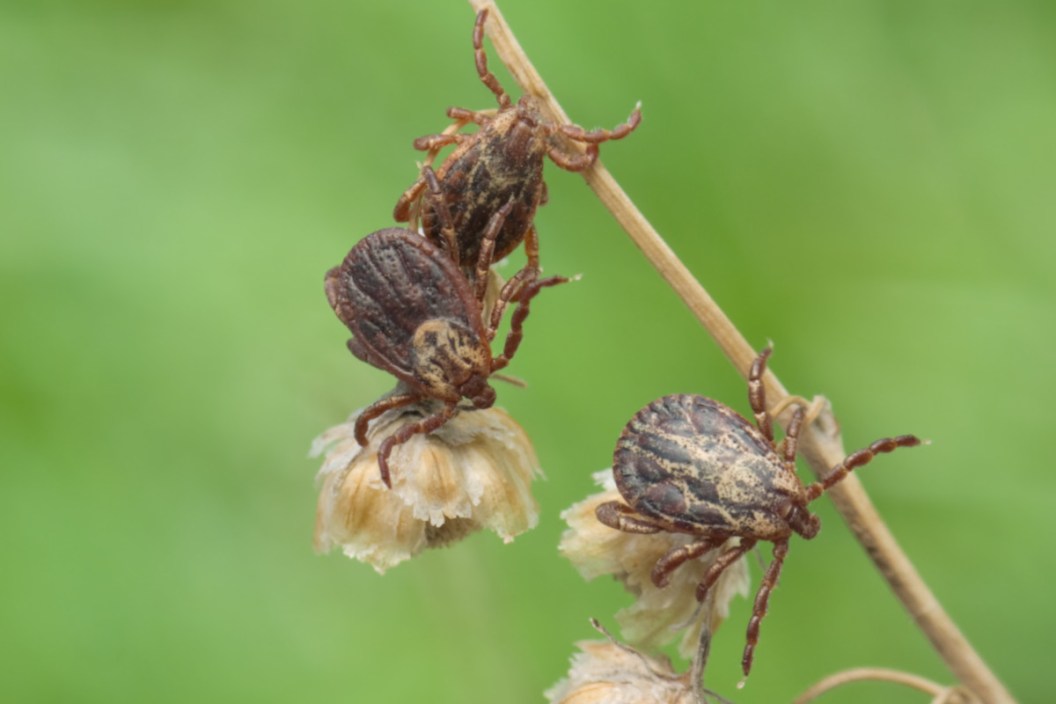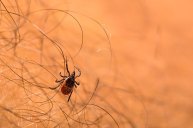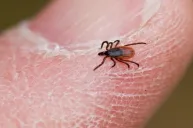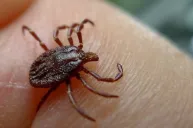As the country heats up and spring gives way to summer outdoor activities, more people are potentially being exposed to disease spreading ticks, and therefore Lyme disease. It's one of the reasons May has been designated National Lyme Disease Awareness Month. Lyme is one of the nastier tick-borne diseases out there and the number of cases seems to only be increasing year after year. It's a tricky disease for doctors to diagnose since it can linger dormant in your system for decades before you're suddenly hit with a wave of debilitating symptoms that can turn your life upside down in a hurry. The bacteria that causes Lyme, Borrelia burgdorferi, has been on this planet for millions of years. Although we've learned a lot through modern medicine, there are still plenty of things that are still a mystery to doctors. We recently got the chance to speak with Dr. Bill Rawls, a physician of 30 years who was trained as an OB-GYN and spent much of his career delivering babies until his health took a sudden tailspin in his late 40s. He soon learned he had Lyme disease, and from there it was an upward climb to find a way past the effects. He's since written a book called "Unlocking Lyme," and he hopes to educate others on what he's learned to combat it.
Most People Don't Know They Have Lyme
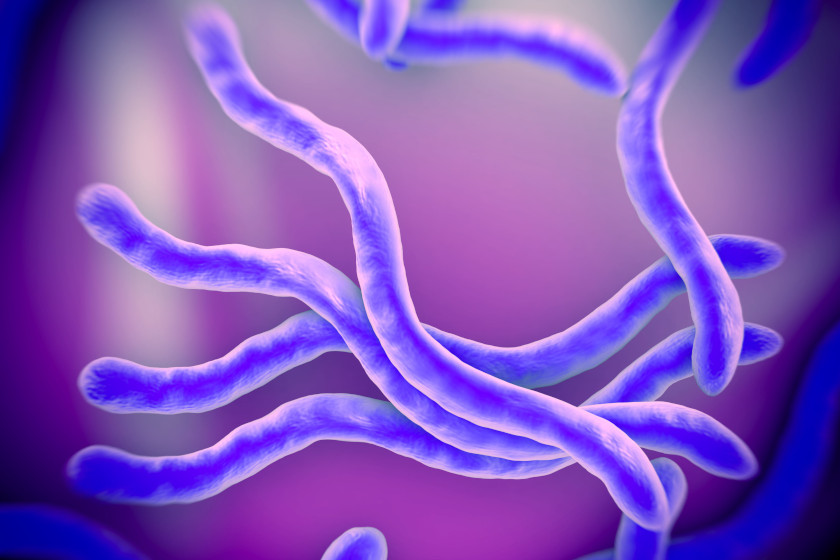
Getty Images: Peddalanka Ramesh
Rawls suspects he picked up Lyme from a tick bite that happened sometime in his childhood. He's always been an outdoor person and used to get ticks all the time while he was growing up. The symptoms didn't happen overnight. Instead, Rawls' career came to a sudden, screeching halt at 45. That's when he started experiencing a myriad of nasty symptoms for the first time.
"I had [an] irregular heartbeat, chest pain, muscle pain, joint pain, brain fog. It was just a very long list of symptoms," Rawls said.
Because Lyme so often results in flu-like symptoms, it's usually not the first thing doctors think to test for when making their diagnosis. It can result in a lot of frustration as a person goes through treatments with nothing working to alleviate their symptoms. Rawls quickly discovered others were in the same boat as him, and that they had likely lived with untreated Lyme disease for decades without realizing it.
"Ninety percent of the people I talk to do not discover it until years down the line," Rawls said.
One of the reasons people don't know they have the disease is because it has a stealthy nature by design. In an ideal situation, the Borrelia bacteria doesn't want to completely debilitate its host because that hurts its chances to spread to new victims.
"Basically, you're getting peppered with these bacteria in your muscles, cells, heart cells, brain cells, it just kind of gets spattered all through your body in low concentrations and they immediately bore into the cells, and they can stay dormant inside cells of your body for a very long time," Rawls said. "If you think about it, that works just fine for the bacteria. Because all they really want to do is get a little bit of food and reproduce and be able to spread to another host."
As a prime example of how long and well the disease has been sneakily operating in humans, Rawls notes the case of Otzi, aka: "The Iceman," a Copper Age man who was found naturally mummified in a glacier on the border of what is now Austria and Italy in 1991. In the decades since the discovery, archaeologists have determined the roughly 45-year-old Otzi likely had Lyme disease. It wasn't what killed him; it was later determined he was murdered by an arrow to the back. However, it seems Otzi was not debilitated by the disease. The bacteria had a perfect symbiotic host-bacteria relationship with the Ice Age hunter.
"This guy was carrying about a normal life," Rawls said. "That's a normal Borrelia infection."
A "Perfect Storm" Often Precedes Symptoms
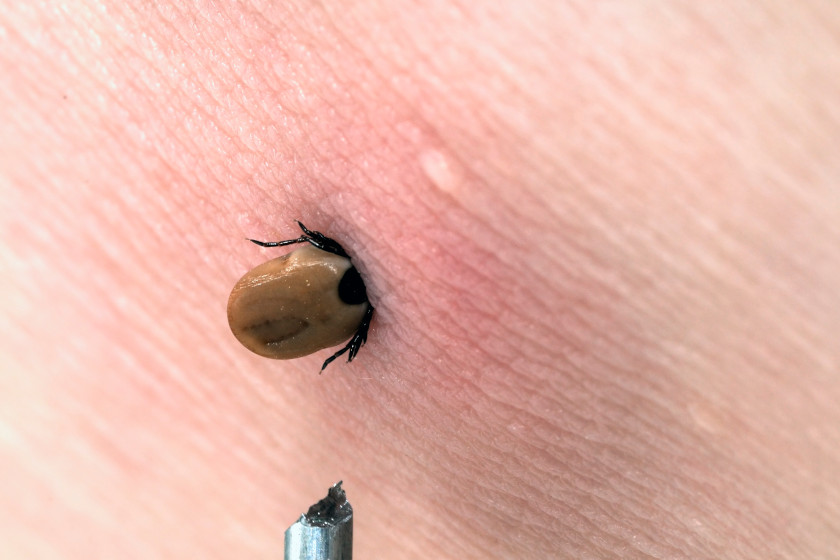
Getty Images: Himagine
Rawls says many people don't start to see the symptoms until they either start aging or when they become overly stressed. In his case, Rawls used to be on call to deliver newborns at all hours of the day and night. He believes the stress and lack of sleep is what triggered the Lyme bacteria to become more active in his system. His story is not unique either.
"Everybody has a perfect storm. In other words, a typical person that I talk to that identifies with Lyme disease doesn't remember a tick bite or becoming specifically ill around the time of a tick bite," Rawls said. "But they do relate a perfect storm of factors that come together and it's different for every person."
Rawls said these "perfect storms" have varied. The common denominator seems to be extreme stress. Auto accidents, divorces, house fires, and even businesses failing are all examples he's heard that were immediately followed by a person experiencing extreme Lyme disease symptoms for the first time in their lives.
"It's typically stress on top of stress on top of stress, and then they start becoming symptomatic, and then they just never got better," Rawls said.
If the person has other underlying health conditions, Lyme can make the symptoms of those conditions worse. He believes it doesn't help that people today are already prone to being stressed out from their jobs and personal lives, more so than people have ever been. It also doesn't help many aren't eating properly or getting as much sleep or exercise as they probably should.
"It disrupts immune system function, but it also affects cells in the body. So yes, stress factors do set you up. If somebody is robustly healthy, gets lots of exercise, eats a good diet, and sleeps eight hours every night [they are] unlikely to become acutely ill with Lyme disease," Rawls said. "In the same respect, if someone has Type 2 diabetes or cardiovascular illness, they've already got poor health habits, and the condition of their tissue is poor, it's just fodder for microbes."
Although Lyme doesn't always stay dormant for years. Sometimes tick bites result in more immediate symptoms simply because a person may have other forms of bacteria, or other health issues that have stayed masked until a sudden bout with acute or chronic Lyme disease sets off a nasty chain reaction.
"Sometimes that tick bite is the straw that broke the camel's back and throws them into a chronic illness," Rawls said.
Treatment Options for Lyme
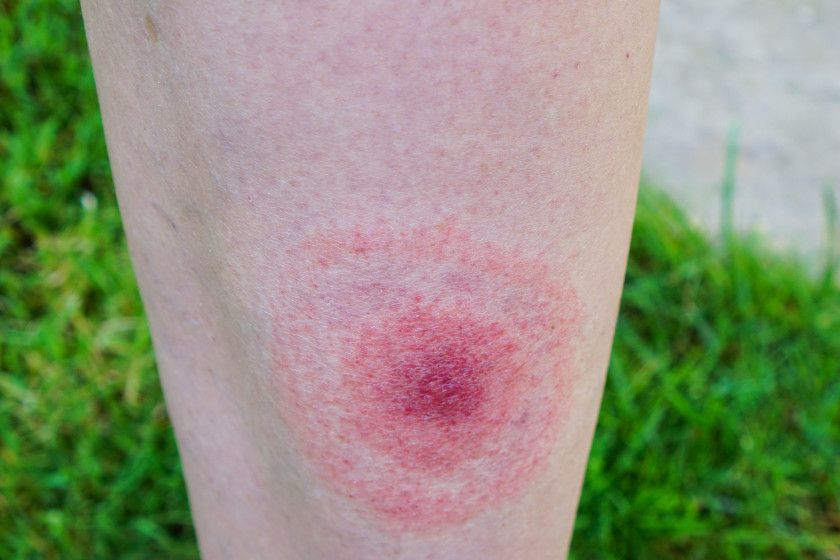
Getty Images: anakopa
While most people never know they've been bitten by an infected tick, plenty of people do discover embedded ticks every year. While some people may want to quickly run to the doctor for testing and treatment, Rawls notes the official recommendation by the Centers for Disease Control and Prevention (CDC) is to not do anything until you have symptoms of Lyme disease. During that time, it's worth monitoring the site of the tick bite for that telltale bull's-eye rash. However, he also noted that the rash doesn't occur in all cases.
The traditional treatment for Lyme is antibiotics. Rawls said people who start them in the early stages of the disease are likely to see more effects than someone who has had it dormant in their system for decades. For those who develop early symptoms after a tick bite, he thinks it's worth taking a course of antibodies like doxycycline.
"Will you eradicate all the microbes with the antibiotics? No, but you can knock the numbers down and that will help your immune system out and that will reduce the number of microbes that end up in your tissues," Rawls said.
In his case, antibiotics did not do much to help Rawls. He believes it's because the Borrelia bacteria became firmly embedded in his cells years before.
"Statistically, people who take antibiotics who are symptomatic have less chance of developing chronic symptoms, but that's not true of everyone," Rawls said. "About 10 to 20 percent of people who take antibiotics will go on to develop chronic symptoms."
Rawls is now a large advocate for herbal therapy for the treatment of Lyme. He said herbs like Japanese knotweed, cat's claw, and Chinese skullcap have anti-microbial properties that are used as a natural form of defense. Johns Hopkins University released a study in 2020 that confirmed these plants and others have properties that were highly effective at killing Lyme bacteria in test tubes. Rawls became convinced of the effectiveness of herbs after they relieved common symptoms for him where antibodies failed. He said they are also effective to prevent Lyme disease before it can take hold in your system.
Preventing Tick Bites in the First Place
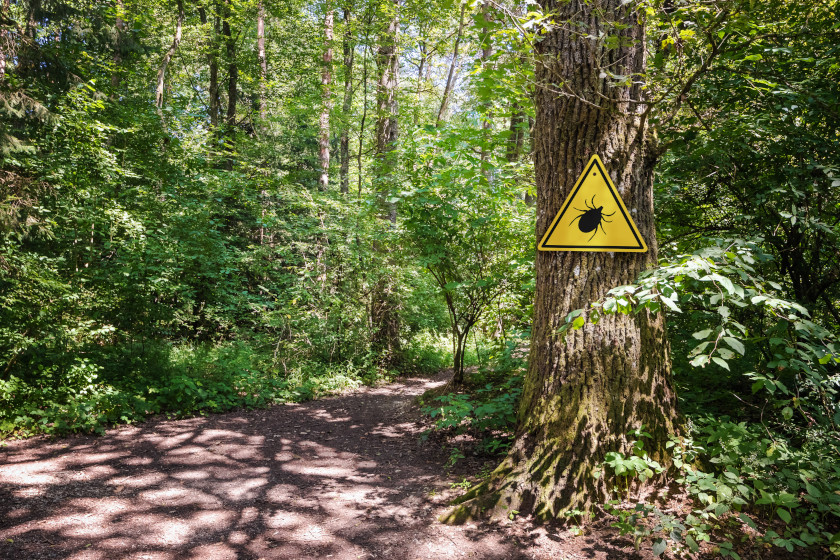
Getty Images: 24k Production
Lyme disease is often associated with the eastern and northeast United States in places like Massachusetts, Connecticut, and New York more than other parts of the country. That's because it's primarily those states that fall in the primary range of black-legged ticks, also known as the deer tick. However, Rawls suspects there is also a greater public health awareness of the disease in high population areas along the East Coast.
Lyme is often misdiagnosed as something else and a greater awareness of the disease may play a part in the higher number of documented cases in those areas.
Rawls said doctors in the eastern part of the country are more likely to suspect and test for Lyme disease when they start hearing common symptoms like neck stiffness, fatigue, joint pain, and the like. Also, it's likely because the disease has been prevalent in these areas for so long. However, since he's become more involved researching Lyme, Rawls has become convinced it is not just a regional thing.
"I talk to just as many people in California as New England," Rawls said.
While researching his book "Unlocking Lyme," Rawls discovered there are 21 different types of Lyme disease worldwide and they are covered by many different tick species. Because all ticks carry some form of bacteria, any tick bite could potentially give a person Lyme.
"All ticks are suspicious," he said.
Which is why the best way to prevent Lyme is to avoid ticks in the first place. Rawls said he still ventures into the outdoors, but he avoids heavy grass or wooded areas where ticks like to roam. He recommends the use of permethrin on clothing. Wearing long pants and long-sleeve shirts can also help. Perhaps most importantly, it pays to do regular tick checks after spending time in the outdoors. The quicker you can remove a tick with tweezers the better.
"Where I see people get acutely ill is when they get a big microbe load," Rawls said. "They came out of the bushes, and they had dozens of seed ticks on them, or a tick was embedded for a long period of time. Those people are more apt to get acutely ill."
Perhaps most importantly, it pays to eat the right foods and actively exercise, because good health habits help your immune system to fight any infections. For additional information on avoiding ticks and removing them, read our interview with Tick expert Dan Wolff. For more information on Dr. Rawls, herbal treatments, and his book "Unlocking Lyme," you can visit his website.
For more outdoor content from Travis Smola, be sure to follow him on Twitter and Instagram For original videos, check out his Geocaching and Outdoors with Travis YouTube channels.
READ MORE: TICK EASE FOUNDER "TICK MAN DAN" TELLS ALL ON THE DANGERS OF THESE PESTS
